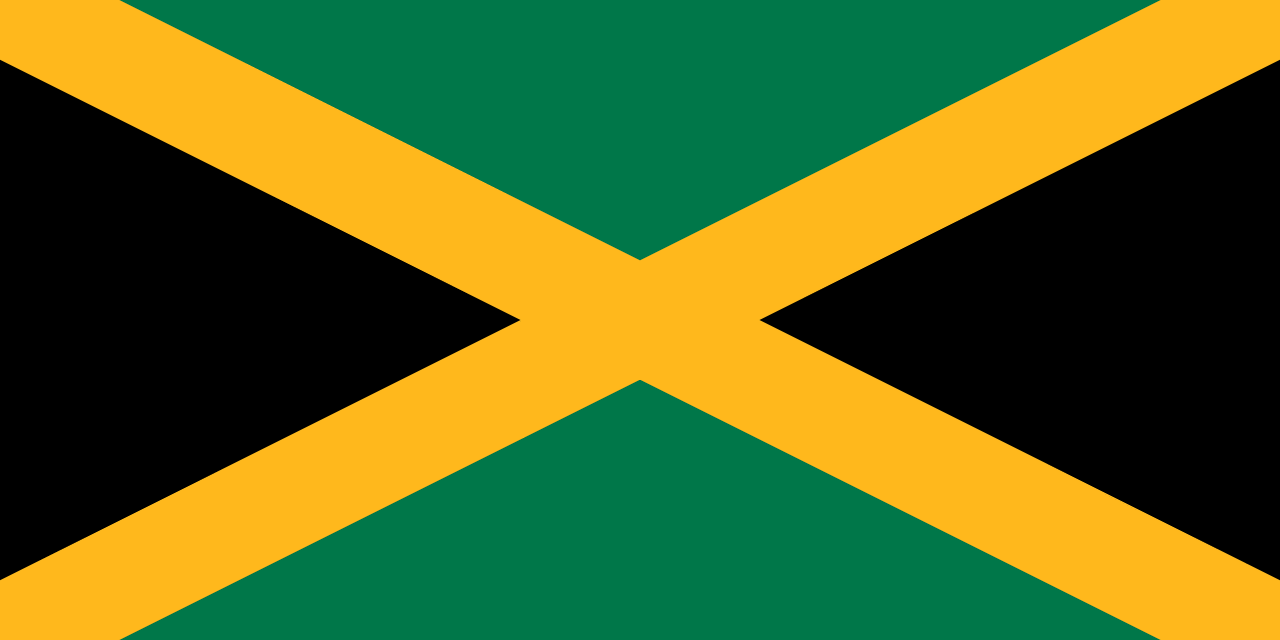The flag of Jordan consists of three equal horizontal stripes: black at the top, white in the middle, and green at the bottom. A red chevron is placed on the hoist side, containing a white seven-pointed star. This distinctive design encapsulates Jordan's rich history, cultural heritage, and aspirations as a modern Arab nation.
Jordan information
| National Flag Day | — |
| Sovereign state | Yes |
| Official name | Hashemite Kingdom of Jordan |
| Capital | Amman |
| Population | 10,203,134 |
| Area | 89,342 km² |
| Currency | Jordanian dinar (JOD) |
| Language | Arabic, English |
| Continent | Asia |
| Region | Middle East |
| Subregion | Levant |
| Borders | Syria, Iraq, Saudi Arabia, Israel, West Bank |
| Timezone | Eastern European Time (EET) UTC+2 |
| Calling code | +962 |
| Top-level domain | .jo |
History of the Jordanian flag
 The current flag of Jordan was officially adopted on April 16, 1928, shortly after the establishment of the Emirate of Transjordan. Its design is deeply rooted in Arab history and the pan-Arab movement of the early 20th century. The flag's basic pattern is derived from the flag of the Arab Revolt of 1916-1918 against Ottoman rule, symbolizing Jordan's role in the struggle for Arab independence and unity.
The current flag of Jordan was officially adopted on April 16, 1928, shortly after the establishment of the Emirate of Transjordan. Its design is deeply rooted in Arab history and the pan-Arab movement of the early 20th century. The flag's basic pattern is derived from the flag of the Arab Revolt of 1916-1918 against Ottoman rule, symbolizing Jordan's role in the struggle for Arab independence and unity.
Symbolism and design of the Jordanian flag
Each element of the Jordanian flag carries profound symbolism. The black stripe represents the Abbasid Caliphate, a significant period in Islamic history. The white stripe symbolizes the Umayyad Caliphate, another important Islamic dynasty. The green stripe represents the Fatimid Caliphate, reflecting the diversity of Islamic heritage. The red chevron symbolizes the Hashemite dynasty, the ruling family of Jordan, and their role in the Arab Revolt. The seven-pointed star within the chevron has multiple meanings: it represents the seven verses of the first surah of the Quran, the seven hills of Amman, and unity among Arab peoples.
Usage and significance of the Jordanian flag
 The Jordanian flag serves as a powerful symbol of national identity, unity, and pride. It is prominently displayed during official ceremonies, national holidays such as Independence Day (May 25), and at government buildings. The flag plays a crucial role in representing Jordan in international forums, diplomatic events, and sporting competitions. Its design and colors have influenced various aspects of Jordanian culture and are often incorporated into national dress, art, and architecture.
The Jordanian flag serves as a powerful symbol of national identity, unity, and pride. It is prominently displayed during official ceremonies, national holidays such as Independence Day (May 25), and at government buildings. The flag plays a crucial role in representing Jordan in international forums, diplomatic events, and sporting competitions. Its design and colors have influenced various aspects of Jordanian culture and are often incorporated into national dress, art, and architecture.
Interesting facts about the Jordanian flag
- Jordan's flag is one of several flags inspired by the Arab Revolt flag, sharing similarities with the flags of Palestine, Kuwait, and the United Arab Emirates.
- The seven-pointed star is unique among Arab flags and distinguishes Jordan's flag from other similar designs.
- The flag's colors are often referred to as the "Pan-Arab colors", symbolizing Jordan's commitment to Arab unity and solidarity.
- During the brief union between Jordan and Iraq in 1958, a modified version of the flag was used, featuring two stars to represent the two kingdoms.
- The exact shades of the colors used in the Jordanian flag are specified in the country's constitution to ensure consistency in its representation.





